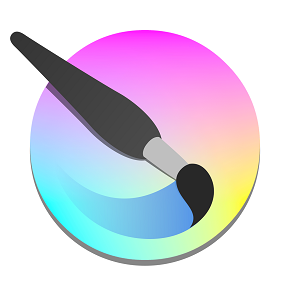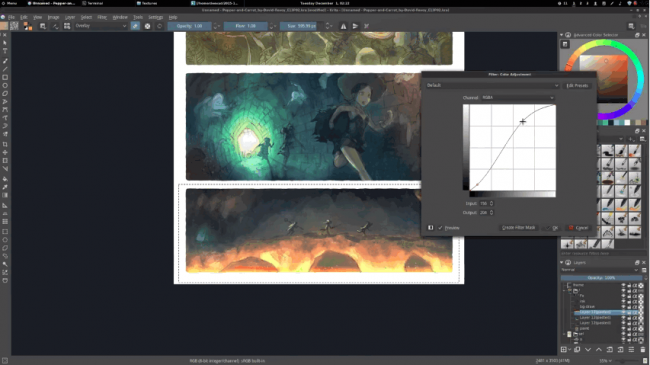
There are special effects like wave, oil paint, and emboss. The effect of a filter is previewed on the image itself. Filters can be used directly on a layer, or as filter masks or layers.Drawing aids such as perspective grids and shapes that have magnetic settings. Easy to toggle x and y mirror buttons in the top toolbar. Modify the origin center, angle, and smoothing parameters.

Take full control by being able to determine how many axis you need.
Symmetry tools that go much further than basic mirroring. This is great tool for non-destructive changes. You can create a transparency layer by itself, or add one to an existing layer. You can also make selection by layer contents by context clicking the layer and clicking “select opaque”. You can add, remove, or intersect to your selection. You can select with shapes such as rectangles and circle, paint your selection, polgon selection, select by color, select by Bezier. Krita comes with many methods of selecting parts of your canvas in order to edit them. The blending modes are arranged by category and have your favorites stored at the top of the list. There are a staggering amount of blending modes available. Brush settings can be saved as presets and shared. The included engines are pixel, smudge, duplicate, filter, hairy, hatching, texture, chalk, color smudge, curve, deform, dyna, experiment (Alchemy), grid, particle, sketch, and spray brushes. Each brush engine has its own logic and behavior. 
 A brush engine is more than just a typical brush pattern with settings changed. It is one of those features you have to see for yourself. You can even paint off the edge and it will automatically start painting on the top. No more clunky offsetting to see how your image repeats itself. Continue painting and watch all of the references update instantly.
A brush engine is more than just a typical brush pattern with settings changed. It is one of those features you have to see for yourself. You can even paint off the edge and it will automatically start painting on the top. No more clunky offsetting to see how your image repeats itself. Continue painting and watch all of the references update instantly. 
The image will make references of itself along the x and y axis. Press the ‘W’ key while painting to toggle wrap-around mode. It is easy to create seamless textures and patterns now.








 0 kommentar(er)
0 kommentar(er)
